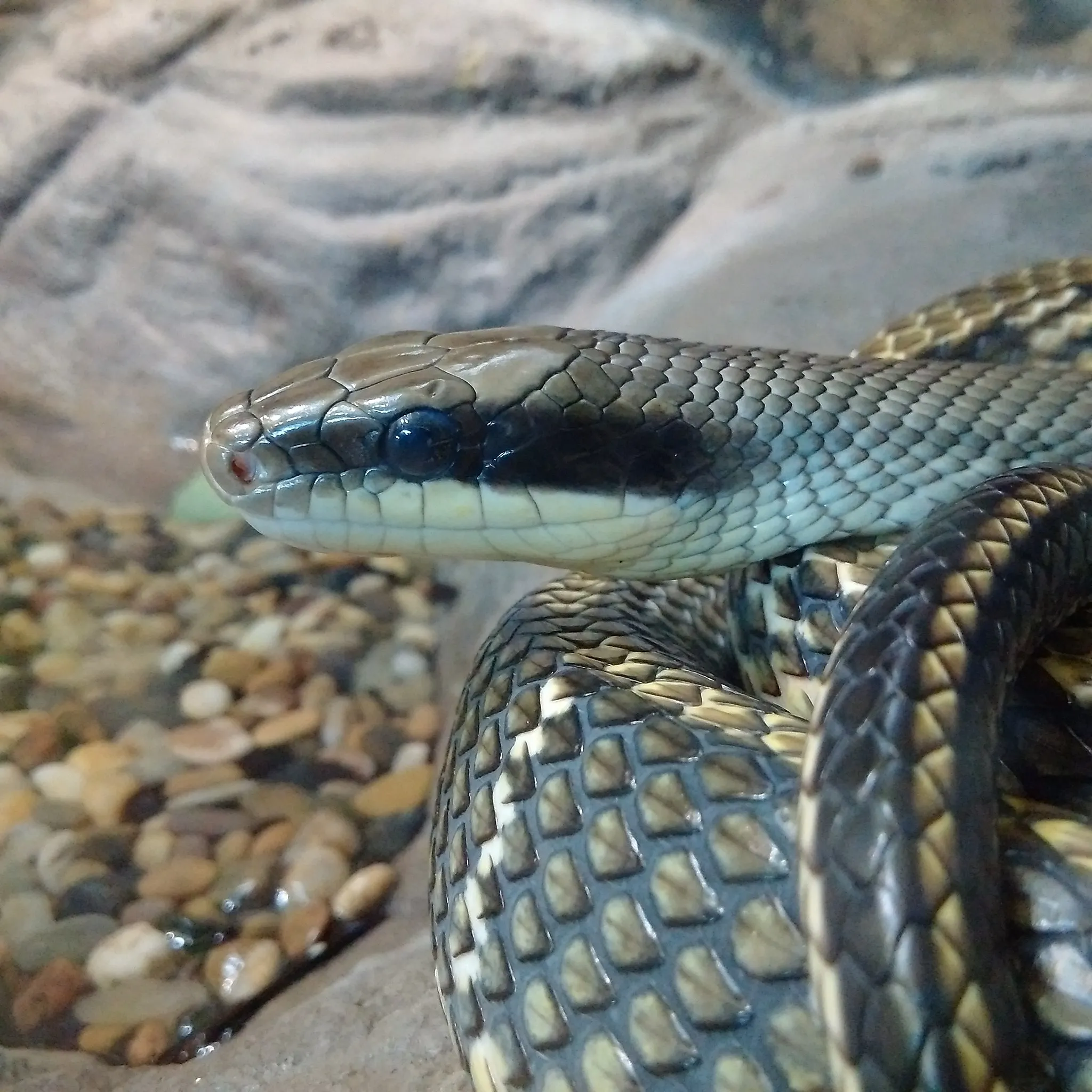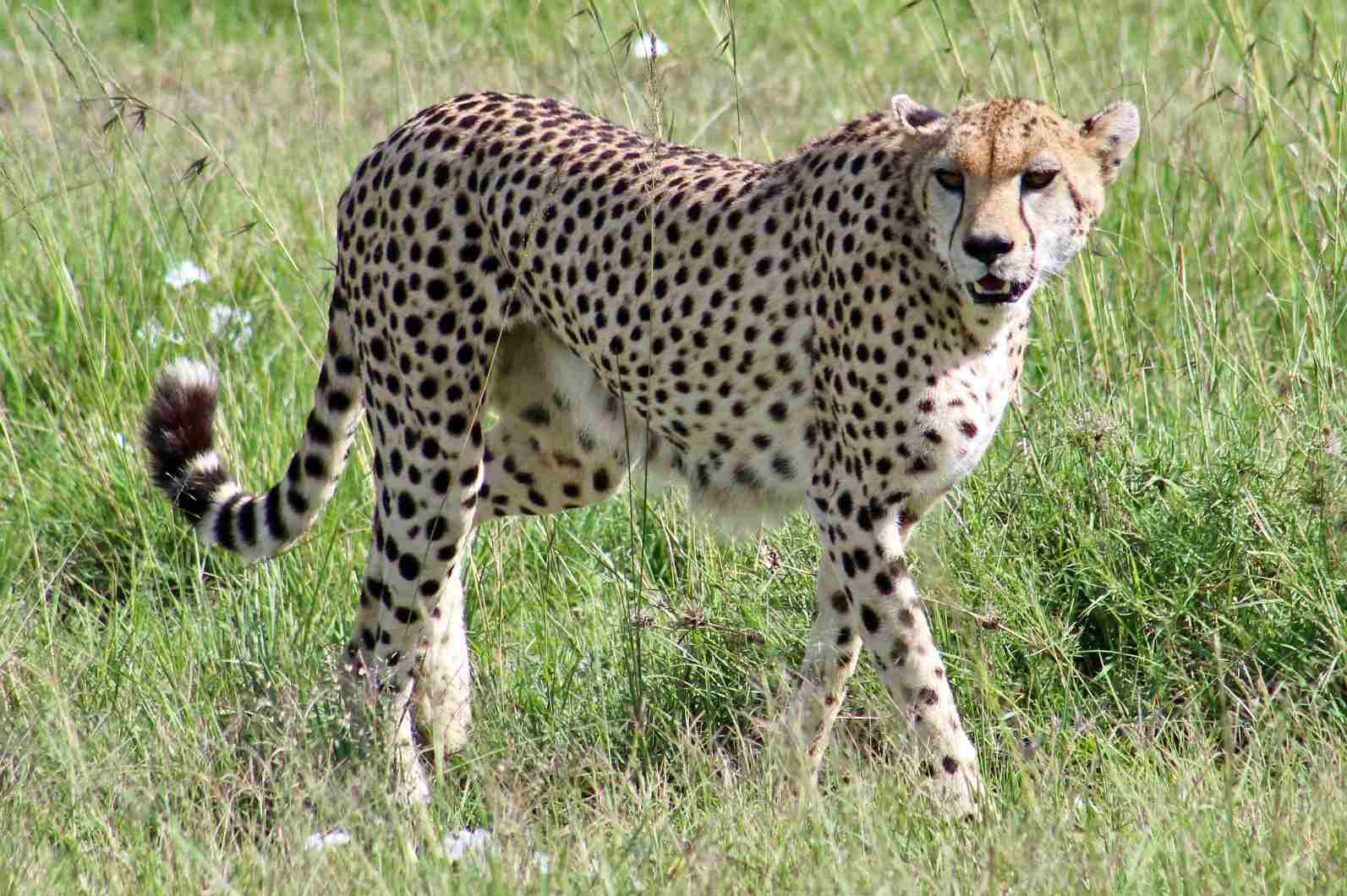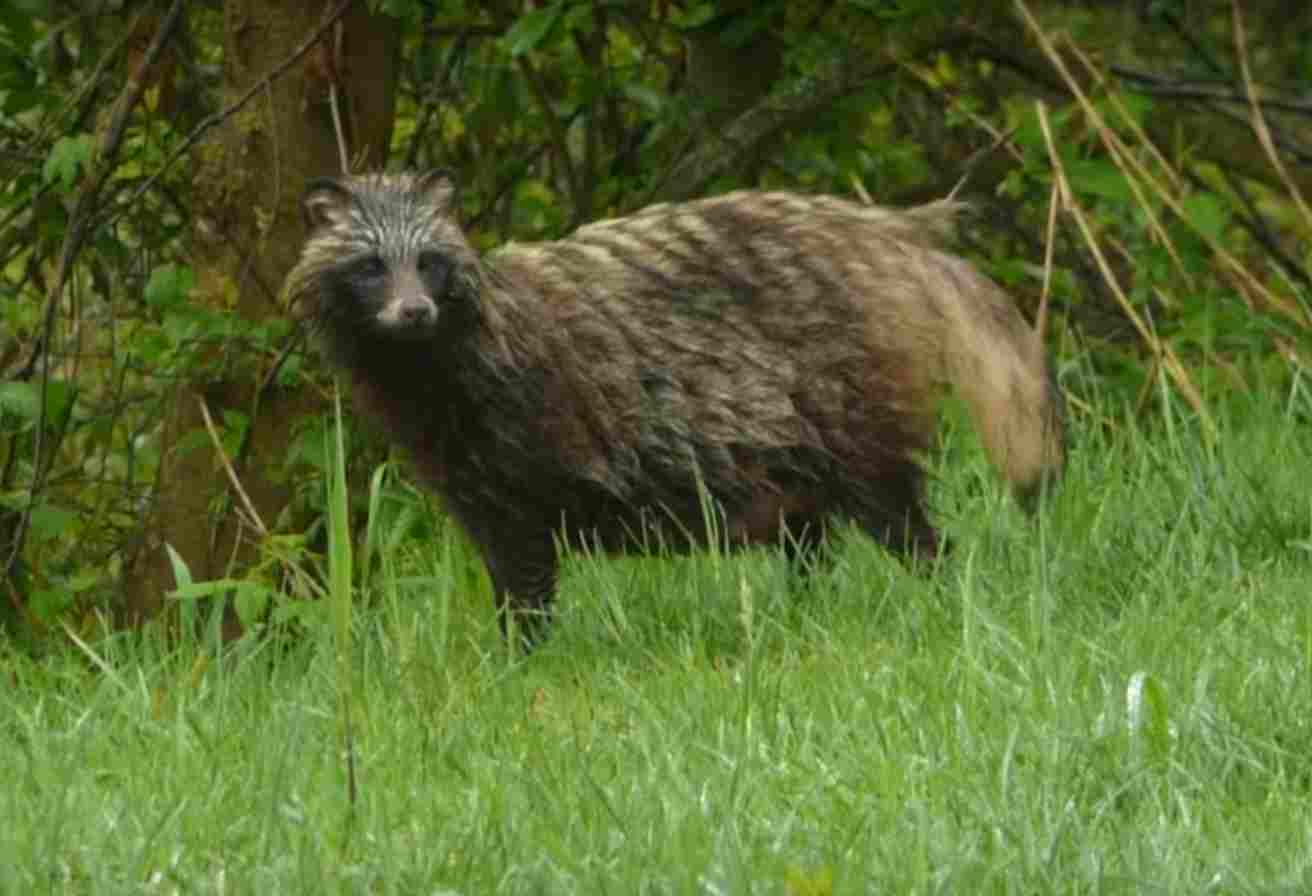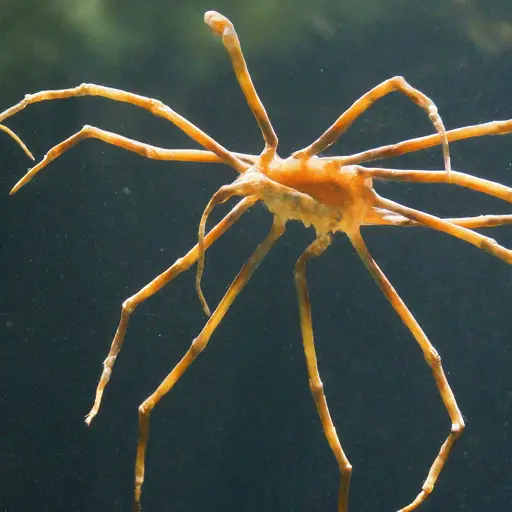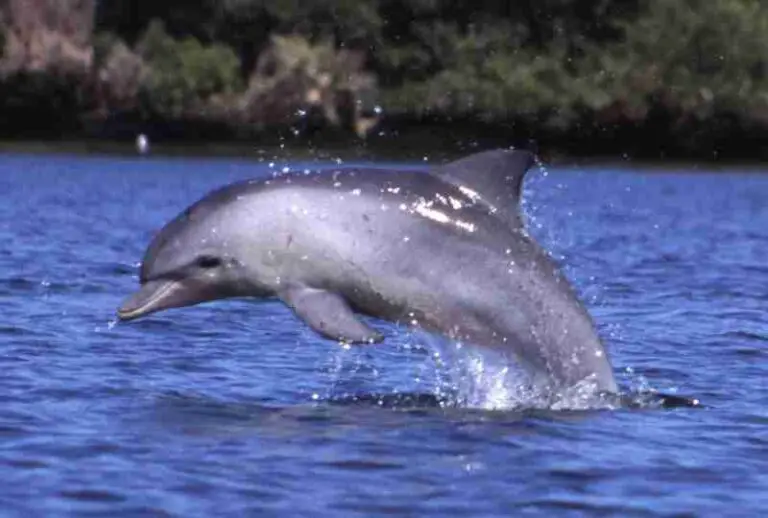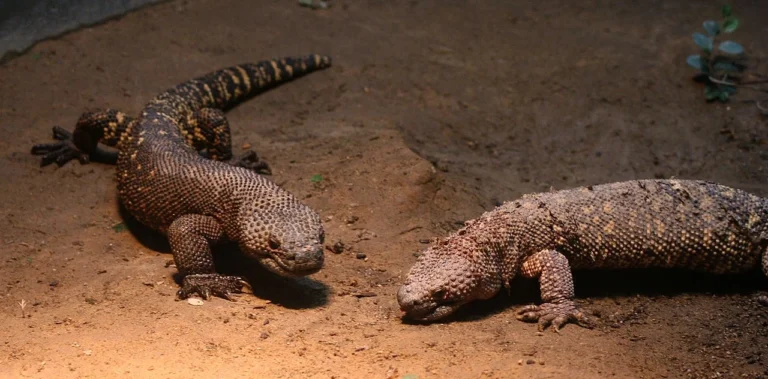21+ Dangerous Animals In Japan And Their Characteristics
1. Japanese Giant Hornet
The Japanese Giant Hornet, scientifically known as Vespa mandarinia japonica, is a formidable insect native to Japan. It is the largest hornet in the world, with adults reaching up to 2 inches in length and possessing a wingspan of over 3 inches. The sting of the Japanese Giant Hornet is extremely painful, delivering a potent venom that can cause severe allergic reactions, tissue damage, and even death in some cases. Known for its aggressive behavior, this hornet is capable of attacking in swarms, presenting a significant threat to both humans and honeybee populations. Its presence has raised concerns due to its impact on ecosystems and public safety. In Japan, caution is advised in areas where these hornets are known to nest, particularly during their active seasons in late summer and early autumn.
2. Habu Snake
The Habu snake, or Trimeresurus flavoviridis, is a highly venomous pit viper found in the Ryukyu Islands of Japan, particularly Okinawa. This snake can grow to over 6 feet long and is known for its aggressive temperament. The venom contains hemotoxins that can cause significant tissue damage, swelling, and in severe cases, organ failure. Immediate medical attention is crucial following a Habu snake bite. The snake typically resides in forested areas and is most active at night, posing a risk to those venturing into these environments.
3. Mamushi Snake
The Mamushi snake, scientifically named Gloydius blomhoffii, is another venomous viper commonly found across Japan. It’s relatively small, typically measuring about 2 feet in length, but it has a potent venom that can cause severe swelling, tissue necrosis, and, in some instances, death. Mamushi bites are a leading cause of snakebite incidents in Japan, often occurring in rural or forested areas. Despite its size, this snake’s aggressive nature and ability to camouflage make it a danger to hikers and farmers.
4. Japanese Pit Viper

Japanese Pit Vipers, including the Habu and Mamushi snakes, are a group of venomous snakes known for their heat-sensing pits located between the eyes and nostrils. These snakes are distributed across various regions of Japan and are known for their potent venom, which can cause intense pain, swelling, and systemic effects. Encounters with these snakes often occur in rural and wooded areas. Their ability to blend into their surroundings makes them particularly dangerous for those unaware of their presence.
5. Asiatic Black Bear
The Asiatic Black Bear, or Ursus thibetanus japonicus, is a subspecies found in Japan, primarily inhabiting the forests of Honshu and Shikoku. Though typically shy and avoiding human interaction, these bears can be highly aggressive when threatened or protecting their young. Weighing up to 400 pounds, they can inflict severe injury with their claws and teeth. Encounters with humans have increased due to habitat loss, leading to more conflicts, particularly during autumn when the bears are searching for food.
6. Brown Bear
The Brown Bear, or Ursus arctos, is Japan’s largest carnivorous mammal, found in Hokkaido’s forests and mountainous regions. These bears can grow up to 10 feet tall and weigh over 1,000 pounds. While generally avoiding human contact, they can be extremely dangerous when hungry or threatened. Brown bears have been responsible for fatal attacks in Japan, especially in remote wilderness areas. It’s critical for hikers and campers in Hokkaido to exercise caution and carry bear-repellent spray.
7. Japanese Giant Salamander
The Japanese Giant Salamander, or Andrias japonicus, is the largest salamander species in the world, reaching lengths of up to 5 feet. While not aggressive, its size and strength can be intimidating. It inhabits clean, cold streams and rivers in mountainous regions of Japan. Although it poses little threat to humans, it is an endangered species due to habitat loss and pollution. Despite its size, this amphibian is primarily a nocturnal feeder, preying on fish and small aquatic creatures.
8. Redback Spider
The Redback Spider, or Latrodectus hasselti, is a highly venomous spider that has established a presence in Japan, particularly in urban areas like Tokyo and Osaka. Identified by the distinctive red stripe on its black body, the redback spider’s venom contains neurotoxins that can cause intense pain, muscle cramps, and, in severe cases, paralysis. While bites are rarely fatal, they require immediate medical attention. These spiders are often found in dark, hidden places, such as under rocks or in sheds.
9. Red-Crowned Crane (When Provoked)
The Red-Crowned Crane, or Grus japonensis, is a large and majestic bird native to Japan, particularly Hokkaido. While generally graceful and gentle, these cranes can become aggressive when defending their nests or young. With a wingspan exceeding 7 feet and a strong beak, they are capable of inflicting injury if threatened. Though encounters with humans are rare, caution is advised near nesting areas. The Red-Crowned Crane is a protected species and is often revered in Japanese culture for its beauty and symbolism.
10. Feral Boars
Feral boars, known as Sus scrofa leucomystax, roam Japan’s rural and forested areas, posing a risk to humans and agriculture. These animals can weigh over 200 pounds and have sharp tusks that can cause severe injuries. Feral boars are typically wary of humans but can become aggressive if cornered or provoked, leading to attacks that can result in serious harm. They are also known to damage crops and property, making them a challenge for rural communities. Encounters with feral boars are becoming more frequent as their population grows.
11. Japanese Fire Ant
The Japanese Fire Ant, or Solenopsis geminata, is an invasive species known for its painful sting and aggressive behavior. These ants form large colonies and can swarm rapidly when disturbed. The sting of the Japanese Fire Ant contains venom that causes intense pain, itching, and, in some cases, allergic reactions. They are typically found in urban areas, nesting in soil or under debris. Due to their aggressive nature and potential to spread quickly, they pose a significant threat to humans and local ecosystems.
12. Japanese Yellowjacket
The Japanese Yellowjacket, or Vespula flaviceps, is an aggressive wasp species found throughout Japan. Known for their painful stings, these yellowjackets can swarm in large numbers when their nest is disturbed. Their venom can cause severe pain, swelling, and, in some cases, allergic reactions, making them particularly dangerous for those who are allergic to insect stings. They often build their nests in hidden locations, such as underground or in wall cavities, increasing the risk of accidental encounters.
13. Sea Snake
Sea snakes, including various species like the Laticauda semifasciata, inhabit Japan’s coastal and marine environments. They are highly venomous, with venom containing potent neurotoxins that can cause paralysis and respiratory failure. Despite their venomous nature, sea snakes are generally shy and avoid humans. Most incidents occur when they are accidentally caught in fishing nets or disturbed while snorkeling or scuba diving. Though bites are rare, immediate medical attention is crucial due to the potency of their venom.
14. Blue-Ringed Octopus
The Blue-Ringed Octopus, scientifically known as Hapalochlaena, is one of the most venomous sea creatures in Japan’s coastal waters. Despite its small size, this octopus carries enough venom to kill multiple people, with neurotoxins that can cause paralysis and respiratory failure within minutes. The blue-ringed octopus is typically docile, displaying its vibrant blue rings as a warning when threatened. Human encounters are rare, but caution is advised when exploring tide pools or coastal areas where these octopuses might reside.
15. Stonefish
Stonefish, or Synanceia verrucosa, are among the most venomous fish in the world, and they can be found in Japan’s coastal waters. These fish are masters of camouflage, blending seamlessly with coral reefs and seabeds, making them difficult to spot. Stonefish possess venomous spines on their dorsal fins that can cause excruciating pain, paralysis, and potentially death if not treated promptly. Divers and snorkelers are at risk of stepping on or touching these hidden creatures, leading to dangerous stings.
16. Cone Snail
Cone snails, like Conus textile, are another group of highly venomous marine creatures found in Japan’s coastal regions. These snails have a specialized harpoon-like tooth that delivers a potent neurotoxin capable of causing paralysis, respiratory failure, and, in some cases, death. Despite their attractive shell patterns, cone snails are deadly to those who handle them carelessly. Caution is necessary when exploring beaches or reefs where cone snails might be hiding, as even a single sting can be fatal.
17. Box Jellyfish
The Box Jellyfish, known as Chironex fleckeri, is a highly venomous sea creature found in Japan’s coastal waters, particularly in the southern regions. Its tentacles contain nematocysts filled with venom capable of causing excruciating pain, cardiac arrest, and death within minutes. The transparent body of the box jellyfish makes it difficult to spot in the water, posing a significant risk to swimmers and divers. Immediate medical treatment is crucial after a box jellyfish sting to mitigate severe effects or fatal outcomes.
18. Tiger Shark
The Tiger Shark, or Galeocerdo cuvier, is a large predatory shark species found in Japan’s coastal waters. Known for its broad diet and aggressive behavior, the tiger shark can grow over 15 feet in length and weigh more than 1,000 pounds. It has a reputation for attacking humans, making it one of the most dangerous shark species. Tiger sharks are often found in shallow waters and near coral reefs, where they can pose a risk to swimmers, surfers, and divers. Extreme caution is advised when entering waters known for tiger shark activity.
19. Great White Shark
The Great White Shark, or Carcharodon carcharias, is one of the largest and most feared predatory sharks, found in Japan’s coastal waters. Known for its size and power, the Great White can reach lengths of up to 20 feet and weigh over 5,000 pounds. It has a history of attacking humans, often leading to severe injuries or fatalities. While these sharks usually feed on seals and other marine animals, they can pose a risk to surfers and swimmers. Great Whites are often found near seal colonies and other areas with abundant prey, which are best avoided by humans.
20. Bull Shark
The Bull Shark, or Carcharhinus leucas, is a highly aggressive shark species found in Japan’s coastal and brackish waters. Unlike many other sharks, the Bull Shark can swim in both saltwater and freshwater, giving it a broader range. It can grow up to 11 feet long and weigh over 500 pounds. Known for its unpredictable behavior and powerful build, the Bull Shark has a reputation for being one of the most dangerous shark species to humans. It often frequents shallow waters, increasing the risk to beachgoers and fishermen.
21. Wild Dogs
Wild Dogs in Japan are generally descended from feral domestic dogs. They can form packs and become aggressive, especially when food is scarce. While most encounters are non-confrontational, wild dogs can pose a threat to humans if provoked or if they feel threatened. They are often found in rural or forested areas and can sometimes stray into populated regions. Caution is advised when encountering these animals, as they may carry diseases like rabies.
22. Black Widow Spider
The Black Widow Spider, or Latrodectus mactans, is a venomous spider species that has established a presence in Japan, primarily in urban and rural areas. Identified by the red hourglass marking on its black abdomen, the Black Widow’s venom contains potent neurotoxins that can cause intense pain, muscle cramps, and, in severe cases, respiratory distress. While bites are rarely fatal, they can be dangerous for young children, the elderly, or those with compromised health. Black Widows are typically found in dark, hidden places, such as under rocks, woodpiles, or in sheds.
| Animal | Description |
| Japanese Giant Hornet |
The largest hornet in the world, with potent venom and aggressive behavior, capable of causing severe allergic reactions and tissue damage.
|
| Habu Snake |
A venomous pit viper from Okinawa, with hemotoxins that cause significant tissue damage and aggressive temperament.
|
| Mamushi Snake |
A venomous viper commonly found across Japan, causing severe swelling and tissue necrosis.
|
| Japanese Pit Viper |
A group of venomous snakes in Japan with potent venom, active in rural and wooded areas.
|
| Asiatic Black Bear |
A subspecies of black bear in Japan, potentially aggressive when threatened or protecting young.
|
| Brown Bear |
Japan’s largest carnivorous mammal, found in Hokkaido, with the potential for fatal attacks on humans.
|
| Japanese Giant Salamander |
The largest salamander species in the world, not aggressive but intimidating due to size and strength.
|
| Redback Spider |
A highly venomous spider with neurotoxins that cause intense pain and muscle cramps.
|
| Red-Crowned Crane (when provoked) |
A large bird that can be aggressive when protecting its nest, causing injury with its beak.
|
| Feral Boars |
Wild boars that pose risks to humans and agriculture due to their aggressive behavior and sharp tusks.
|
| Japanese Fire Ant |
An aggressive ant species with venom that causes intense pain and allergic reactions.
|
| Japanese Yellowjacket |
An aggressive wasp species with painful stings, capable of causing allergic reactions.
|
| Sea Snake |
Highly venomous marine snakes with potent neurotoxins, mostly avoiding humans but dangerous if provoked.
|
| Blue-Ringed Octopus |
One of the most venomous sea creatures, capable of causing paralysis and respiratory failure with its potent neurotoxin.
|
| Stonefish |
Among the most venomous fish in the world, hidden in coral reefs, with venomous spines that cause excruciating pain.
|
| Cone Snail |
A highly venomous marine creature with neurotoxins that can cause paralysis and potentially fatal effects.
|
| Box Jellyfish |
A highly venomous sea creature with tentacles containing potent venom, causing severe pain and potentially fatal outcomes.
|
| Tiger Shark |
A large predatory shark species known for its aggressive behavior and potential danger to humans.
|
| Great White Shark |
A large and feared predatory shark with a history of attacking humans, posing risks to surfers and swimmers.
|
| Bull Shark |
A highly aggressive shark species known to swim in both saltwater and freshwater, posing a risk to humans.
|
| Wild Dogs |
Feral dogs in Japan that can become aggressive when provoked, sometimes forming packs and potentially carrying diseases.
|
| Black Widow Spider |
A venomous spider species with potent neurotoxins, capable of causing intense pain and muscle cramps, and potentially severe outcomes.
|

